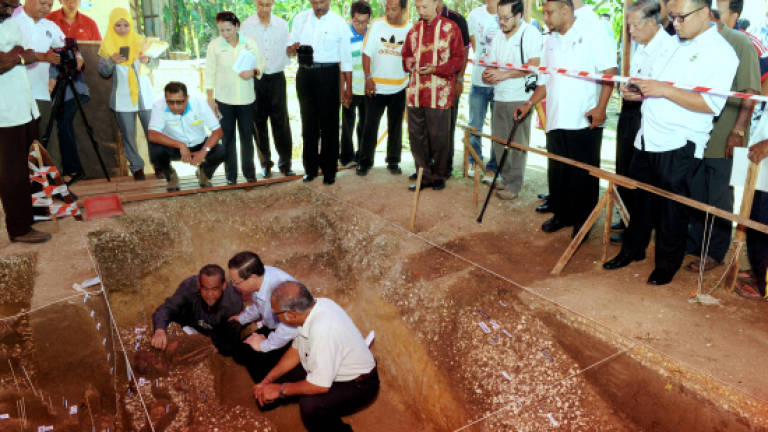Penang govt aims to list Guar Kepah as Unesco World Heritage Site

BUTTERWORTH: The Penang government aims to have the site where a Neolithic-age skeleton was found at Guar Kepah here listed as a Unesco World Heritage Site.
Chief Minister Lim Guan Eng said the state will apply for the listing with the help of the relevant authorities once the archaeological work was completed.
He said these agencies include the Seberang Perai Municipal Council, the National Heritage Department and grants manager Think City.
Due to the latest findings, a proposed RM1 million heritage archaeological gallery at the site has been postponed pending the completion of the research, he said.
"We want to ensure all related documents required by Unesco are completed to have this place listed as a World Archaeology Site," he said when visiting the place today.
Also present was USM Centre for Global Archaeological Research Malaysia (CGAR) director Professor Datuk Mokhtar Saidin.
He said a gallery and a museum should be built at the place to preserve and mark the area as a site of historical importance.
He said the discovery of the female skeleton came after a prior digging conducted by British colonial archaeologist in the 1850s.
He said the skeleton was found buried with its arms folded and surrounded by pottery, stone tools and several different types of shells.
He added finding the skeleton provided modern day researchers a window into the culture and lifestyle of the Neolithic people thousands of years ago.
"These people, of the Hoabinh culture, were hunter gatherers living near the sea and they hunted deer, pigs and also ate turtles, clams, fishes and shellfish," he said adding his team of about 10 are slowly uncovering the skeleton before taking the specimen back to USM for tests.
Earlier archaeologists discovered three shell middens (tall mounds made out of seashells) at the site that were named, Shell Midden A, Shell Midden B and Shell Midden C.
During archaeological excavation works conducted by British archaeologists between 1851 and 1934, one skeleton was excavated from site A, 31 from site B and nine from site C.
All these findings were taken by archaeologists for further testing and are now housed at the National Natuurhistorisch Museum in Leiden, Holland.